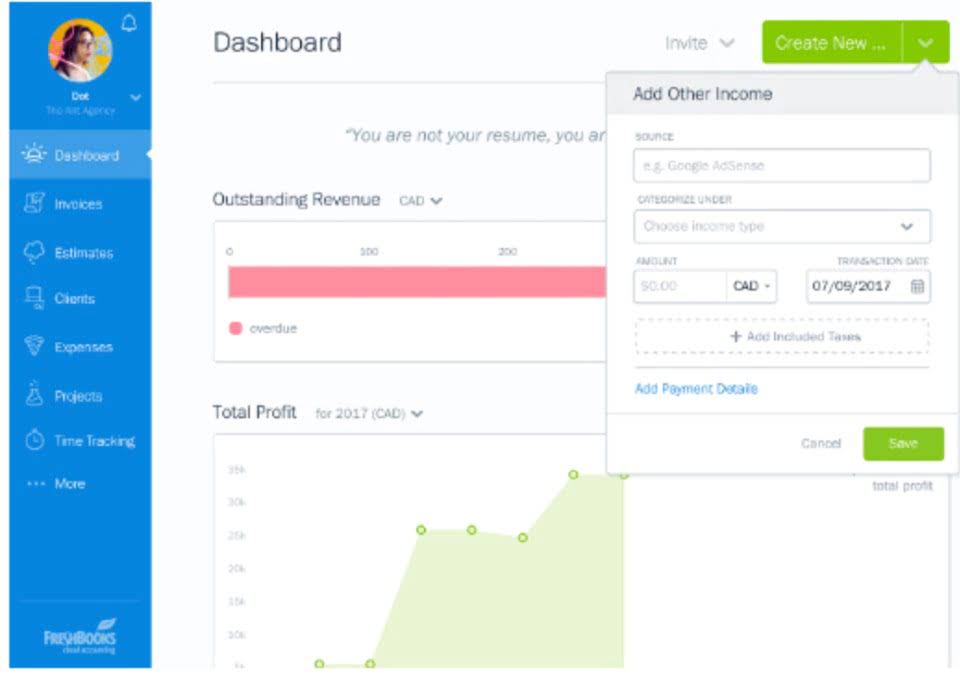![]()
It measures a company’s profitability against its book value, this is the biggest limitation of this ratio too. Some of these assets might be better used to invest in the company or to pay shareholder dividends. Determining individual financial ratios per period and tracking the change in their values over time is done to spot trends that may be developing in a company. For example, an increasing debt-to-asset ratio may indicate that a company is overburdened with debt and may eventually be facing default risk. While financial ratios are essential tools for evaluating a company’s financial health and performance, they also have limitations. Profitability ratios determine a company’s financial performance by analyzing its ability to generate profits relative to its sales, assets, or equity.
- Liquidity ratios include the current ratio, quick ratio, and working capital ratio.
- The greater this ratio is above one, the greater its ability to meet short-term obligations.
- Rather than having to look at raw revenue and expense data, owners and potential investors can simply look up financial ratios that summarize the information they want to learn.
- Financial ratios can likewise assist with deciding whether the monetary assets are finished or under-utilized.
- Additionally, consulting a wealth management professional can help you navigate these limitations and make informed decisions.
This ratio measures a company’s ability to meet interest payments on its debt, indicating the firm’s financial stability and risk exposure. The debt ratio is calculated as total liabilities divided by total assets. This ratio measures the proportion of a company’s assets financed by debt, indicating its financial leverage and overall risk exposure. Net profit margin, often referred to how would you characterize financial ratios simply as profit margin or the bottom line, is a ratio that investors use to compare the profitability of companies within the same sector. Instead of dissecting financial statements to compare how profitable companies are, an investor can use this ratio instead. For example, suppose company ABC and company DEF are in the same sector with profit margins of 50% and 10%, respectively.
What Are Financial Ratios And Why Are They Important?
It is also called an activity ratio because it measures how efficiently a company is using its assets to generate sales for the organization. ROCE for capital-intensive businesses is generally very low compared to asset-light companies making the same amount of profits because a capital-intensive business generally has https://www.bookstime.com/ more assets. Net profit is used to calculate the P/E ratio of a company, and any squeeze or expansion in the net profit margin of a company directly impacts its P/E ratio and hence the overall valuation. Market value ratios help financial backers with foreseeing the amount they will procure from particular investments.
For instance, a rising debt-to-asset ratio might show that an organization is overburdened with debt and may ultimately be confronting default risk. Wasteful utilization of assets like automobiles, land, and buildings brings about superfluous costs that should be disposed of. Financial ratios can likewise assist with deciding whether the monetary assets are finished or under-utilized.
What Does Ratio Analysis Tell You?
In fact, companies usually invest their cash right away in other long-term assets that will produce future benefits for the organization. Using one current ratio or the other is really up to you, and it depends on the kind of analysis performed. To assess if there was an improvement in the creditworthiness of the business we have to compare this data with the previous year.

The return on equity (ROE) ratio is calculated as net income divided by total equity. This ratio measures the profitability of a company in relation to the equity invested by shareholders, indicating the company’s ability to generate returns for its investors. The equity ratio is calculated as total equity divided by total assets. This ratio measures the proportion of a company’s assets financed by shareholders’ equity, providing insights into the company’s capital structure and financial stability. Financial ratios can be used to compare and analyze companies in the same industry. By examining key ratios such as the debt-to-equity ratio and inventory turnover ratio, investors and analysts can better understand how a company is performing relative to its peers.
What Is The Difference Between Liquidity Ratios And Profitability Ratios?
They aid decision-makers in analyzing business performance, conducting industry comparisons, identifying trends, and making informed investment and financial decisions. Benchmarks are also frequently implemented by external parties such lenders. Lending institutions often set requirements for financial health as part of covenants in loan documents. Covenants form part of the loan’s terms and conditions and companies must maintain certain metrics or the loan may be recalled. In deciding whether the acid-test ratio is satisfactory, investors consider the quality of the marketable securities and receivables.
- These ratios convey how well a company can generate profits from its operations.
- Another example of a financial ratio is the gross profit margin, which shows the percentage of revenue that exceeds the cost of goods sold.
- Liquidity ratios measure an organization’s capacity to meet its debt commitments utilizing its current assets.
- Analysts must be sure that their comparisons are valid—especially when the comparisons are of items for different periods or different companies.
- A ratio higher than 0.5 or 50% can determine a higher risk to the business.



